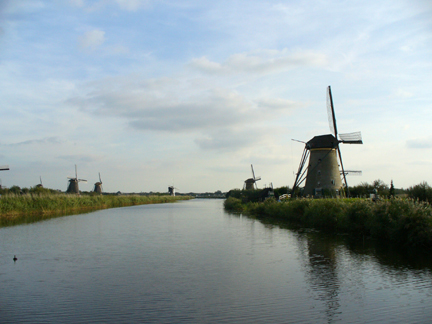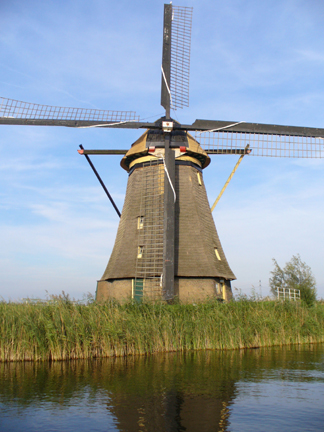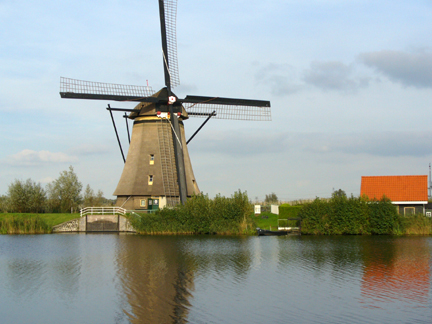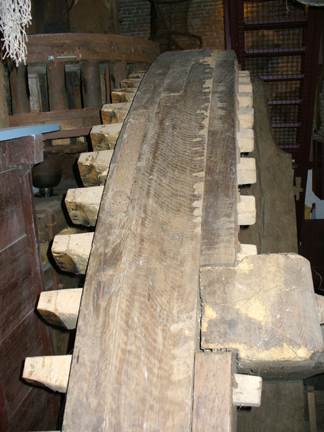Nowhere in the world you will find as many windmills as near (the Dutch village) Kinderdijk. Around 1740 no less than 19 sturdy mills were built here. They have been well preserved to the present day. The mills drain the excess water from the Alblasserwaard polders - pieces of land below sea-level surrounded by a dike - after which the water is sluiced into the river Lek. The powerful mill sails serve to transmit the force of the wind on to large paddle-wheels which scoop up the water. Nowadays power-driven pumping engines do the job, including one of the largest water screw pumping-station in Europe.

A view of a number of mills.

.

The vanes or sails will be covered with canvas to allow the wind to turn them. None of the windmills were set up to work that day.

The entire cap at the top can be rotated so that the sails face the wind directly.


We could climb up into one mill to see some of the gears. This one is attached to the vertical shaft which causes the paddle wheel (or screw) to pump the water.

This is the gear attached to the shaft of the sail to convert the motion of the sail to the rotary motion of the vertical shaft.
Continue to the Liberation Museum.
